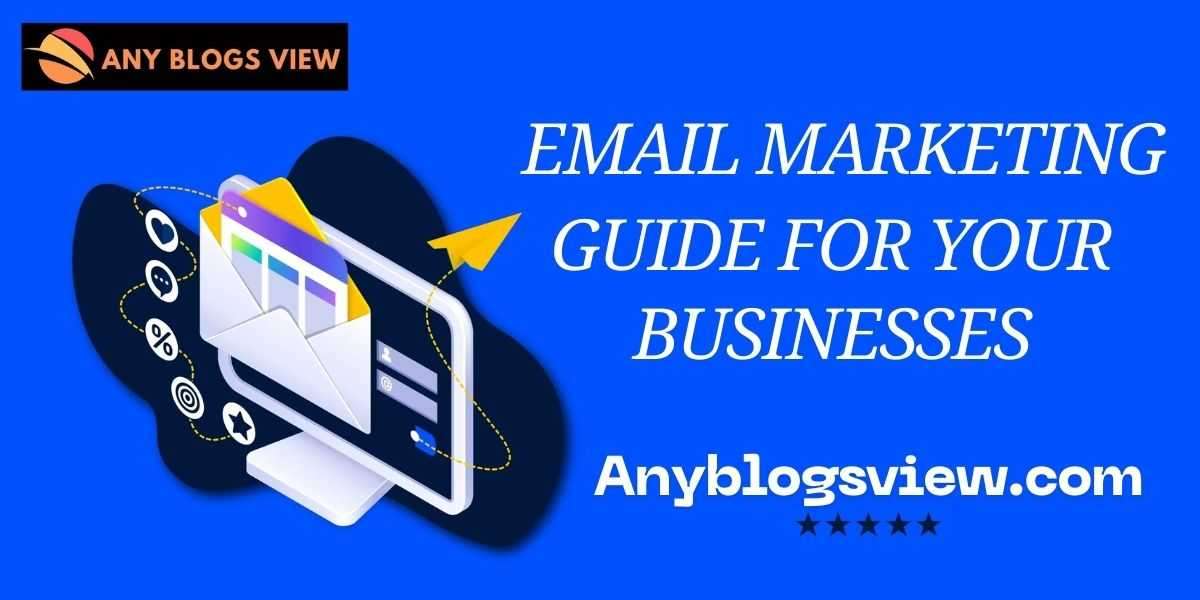Email marketing remains one of the most effective ways for businesses to reach and engage their audiences. From increasing brand awareness to driving sales, email campaigns can be highly effective when done well. This article will cover the key components of successful email marketing, including follow-up emails, event invitations, email authentication, and building an engaged email list. Whether you’re a restaurant owner or a marketer for any other industry, this guide will help you understand the essentials of email marketing to boost your campaign results.
What is Email Marketing?
Email marketing is a direct form of marketing that uses email to promote products or services to an audience. It's widely used for purposes like sharing updates, promoting offers, or nurturing leads. Email marketing stands out because it’s cost-effective and can be easily scaled and personalized. While social media and search engines are popular, email marketing provides a direct line of communication, often with higher ROI (return on investment) and better engagement rates.
Why Email Marketing is Essential for Businesses
For businesses of all types, email marketing serves multiple purposes:
- Building Customer Relationships: Email allows businesses to keep customers informed about news, promotions, and special events.
- Driving Sales: Well-crafted emails can motivate customers to purchase by presenting valuable offers.
- Enhancing Customer Loyalty: Email helps businesses maintain an ongoing relationship with their customers, building loyalty over time.
- Cost-Effective Marketing: Email marketing requires minimal investment, making it accessible to small businesses as well as larger companies.
Follow-Up Emails: Keeping the Conversation Going
Follow-up emails are critical for maintaining communication after a customer interacts with a business. They help to keep the conversation going and can significantly improve customer satisfaction and conversion rates. Follow-up emails are used for various purposes, such as confirming a purchase, gathering feedback, or offering additional support. Here are some tips for crafting effective follow-up emails:
- Be Timely: Send follow-up emails shortly after an interaction. Timing is key to showing customers that you value their time and engagement.
- Personalize the Content: Address the customer by name and reference their specific interaction or purchase to make the email feel more personal.
- Provide Value: Offer relevant content, discounts, or other incentives that might interest the customer based on their previous interactions.
- Keep it Brief and Relevant: Follow-up emails should be concise and to the point. Respect the customer’s time and get straight to the purpose of your message.
Follow-up emails can also be automated to streamline this process, ensuring that each customer receives timely responses without the need for manual intervention.
Event Email Invitations: Creating Anticipation
Event email invitations are a valuable tool for getting people to attend events, whether online or in person. They are particularly useful for businesses like restaurants that want to draw a crowd for special occasions or promotional events. An effective event invitation email should do the following:
- Create Excitement: Use engaging language and visuals to build anticipation and excitement around the event.
- Provide Clear Details: Include essential information such as date, time, location, and how to RSVP. A link to a calendar invite can also be helpful.
- Highlight Benefits: Focus on what attendees will gain from attending, such as special offers, exclusive experiences, or access to limited items.
- Make it Easy to RSVP: Provide a clear call-to-action, like a button for RSVPing, to make it easy for recipients to confirm their attendance.
- Follow Up: Send reminder emails leading up to the event to ensure high attendance. Reminders help keep your event top-of-mind, especially if it was initially announced weeks in advance.
A well-structured event invitation email can be crucial in driving attendance and engagement at your event, helping to make it a success.
Email Authentication: Ensuring Security and Credibility
Email authentication is a set of technical processes that verify the sender's identity and ensure that an email has not been tampered with. It is an essential aspect of email marketing, as it helps protect recipients from phishing and other malicious attacks. Authentication methods include SPF (Sender Policy Framework), DKIM (DomainKeys Identified Mail), and DMARC (Domain-based Message Authentication, Reporting, and Conformance). Here’s why authentication is crucial:
- Builds Trust: Recipients are more likely to trust emails that pass authentication, increasing the chances of engagement.
- Prevents Spam and Phishing: Authentication helps prevent cybercriminals from impersonating your business, protecting both your brand and your customers.
- Improves Deliverability: Emails that pass authentication checks are more likely to reach the inbox rather than being flagged as spam.
- Ensures Brand Reputation: A brand that fails authentication may see its reputation suffer, as customers could question the legitimacy of its messages.
Setting up proper email authentication is often a technical task, so working with an email service provider can help ensure all necessary protocols are in place.
How to Build an Engaged Email List
An engaged email list is one where recipients are genuinely interested in hearing from your business. Building an engaged email list takes time and effort, but it’s crucial for email marketing success. Here’s how to build and maintain a strong, engaged list:
- Use Sign-Up Forms on Your Website: Encourage visitors to join your list by offering a simple sign-up form on your homepage, blog, or other relevant pages.
- Offer Incentives: Provide value for signing up, like a discount, free resource, or exclusive content.
- Host Events or Webinars: Gather emails from attendees of events or webinars who show interest in your business.
- Avoid Purchasing Lists: Buying email lists often results in low engagement and can damage your brand’s reputation. Focus on organic growth to build a list of genuinely interested recipients.
- Encourage Subscriptions on Social Media: Use social media platforms to promote your email list and show the value of subscribing.
Once you have built a list, continue to nurture it by providing high-quality, relevant content. An engaged list will respond better to your emails, improving open and click-through rates.
Email Marketing for Restaurants: A Special Focus
Restaurants can greatly benefit from email marketing by using it to promote specials, events, and new menu items. For restaurants, email is a powerful way to create a loyal customer base and increase foot traffic. Here are some specific strategies for restaurant email marketing:
- Promote Special Offers: Use emails to inform subscribers about special discounts, meal deals, or holiday promotions.
- Highlight New Menu Items: When you add new items to your menu, send an email showcasing them with enticing descriptions and images.
- Send Birthday and Anniversary Messages: Personalize the customer experience by recognizing special occasions with exclusive offers.
- Provide Reservation Reminders: For restaurants that take reservations, send automated reminders to confirm bookings and reduce no-shows.
- Request Customer Feedback: After a customer dines, follow up with a feedback email to show you value their experience. This feedback can help improve your service and build a strong rapport with customers.
Restaurants that leverage email marketing can foster customer loyalty, encourage repeat business, and stand out in a competitive market.
Best Practices for Effective Email Marketing
To make the most of email marketing, follow these best practices:
- Personalize Content: Tailor messages based on recipient preferences or past behaviors. Personalization increases engagement and helps build customer loyalty.
- Optimize for Mobile: Many recipients open emails on mobile devices. Ensure your emails are mobile-friendly to maintain a good user experience.
- Test and Optimize: Run A/B tests on subject lines, content, and images to see what resonates with your audience. Continually improve based on the results.
- Maintain Consistency: Send emails regularly but avoid overwhelming your subscribers. A consistent schedule helps build trust and familiarity with your brand.
- Comply with Regulations: Make sure to follow email marketing laws, such as including an unsubscribe link in every email and respecting GDPR requirements if applicable.
Conclusion
Email marketing remains a powerful tool for businesses, offering direct, customizable communication with customers. By mastering follow-up emails, event invitations, email authentication, and list-building strategies, you can create a successful email marketing strategy. Whether you’re a restaurant owner looking to engage diners or a business owner in another industry, email marketing can help grow your audience and boost sales. By following these strategies and best practices, you can ensure your emails are relevant, effective, and well-received by your audience.








